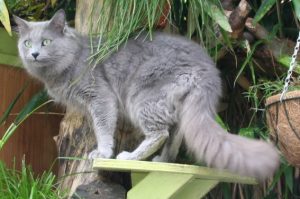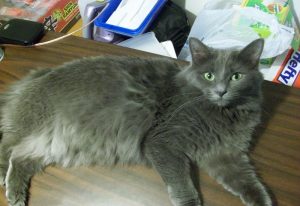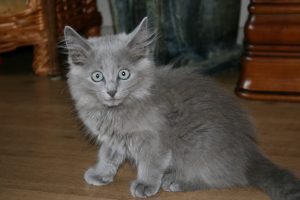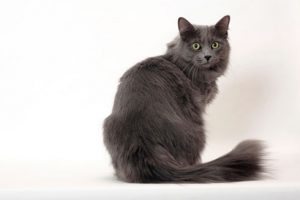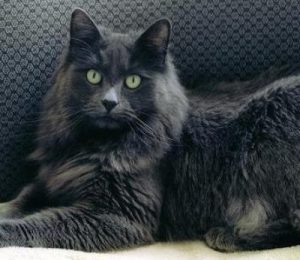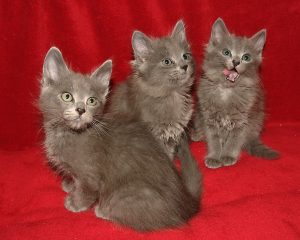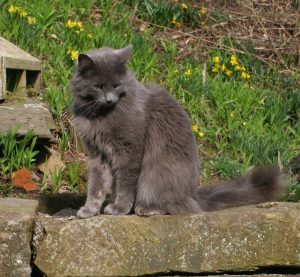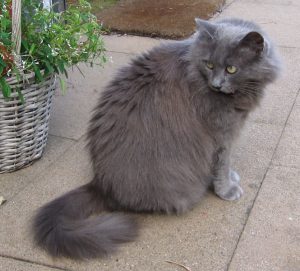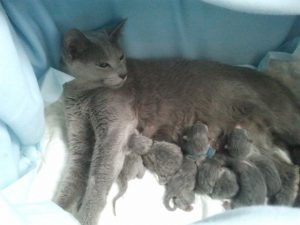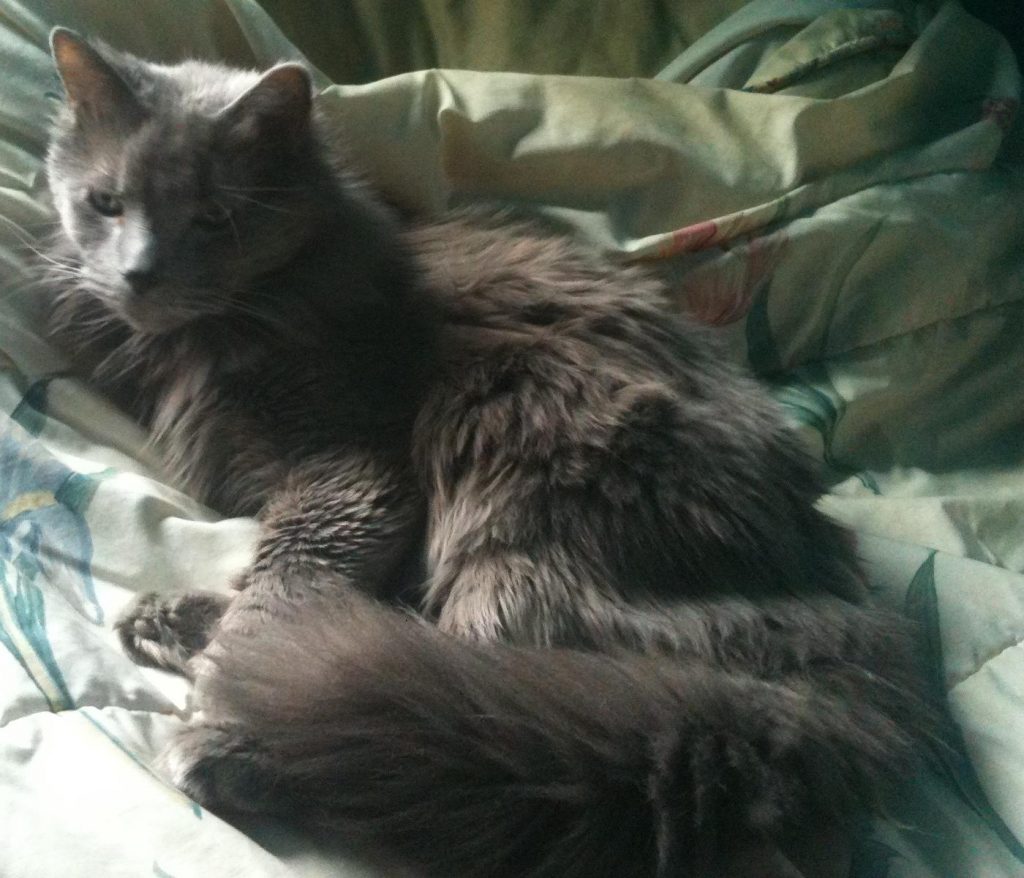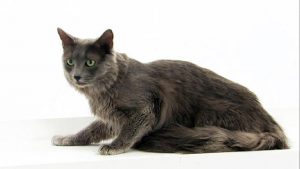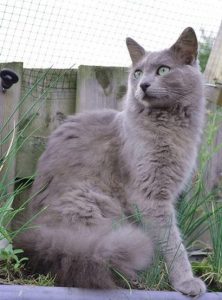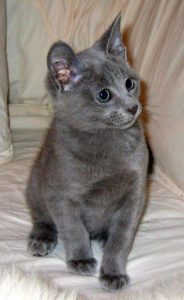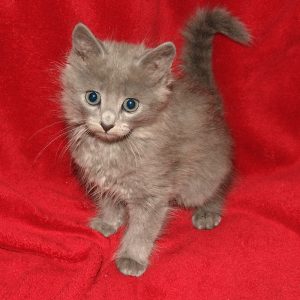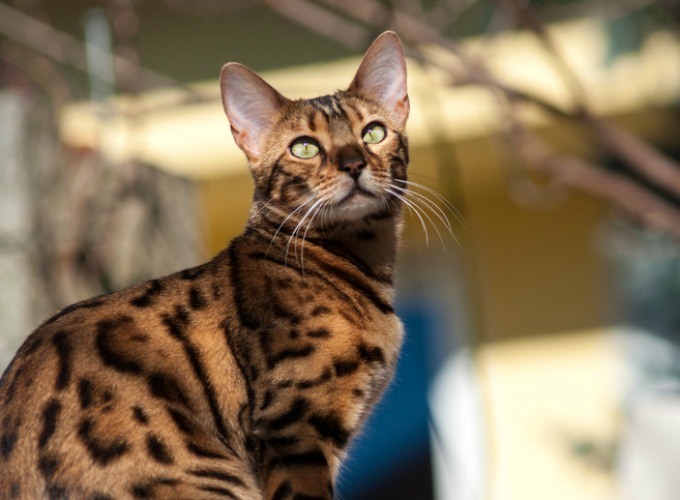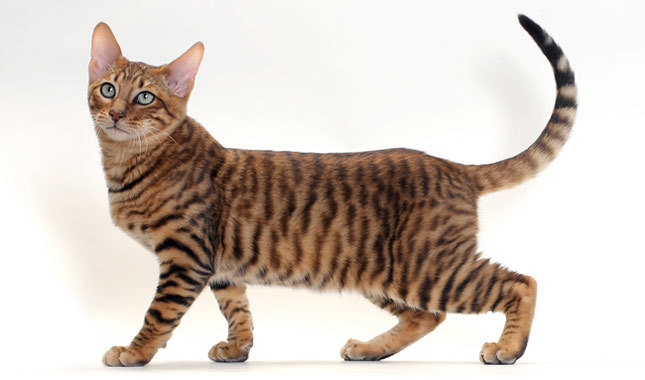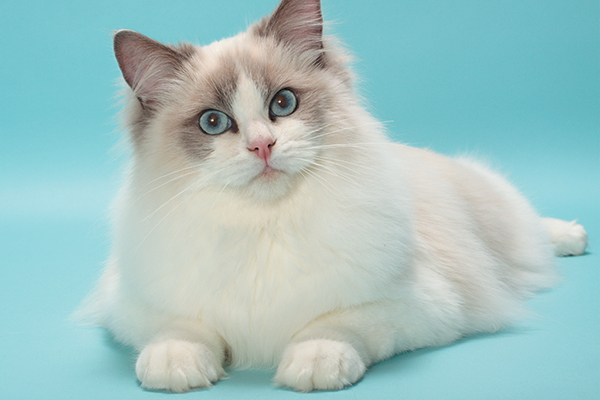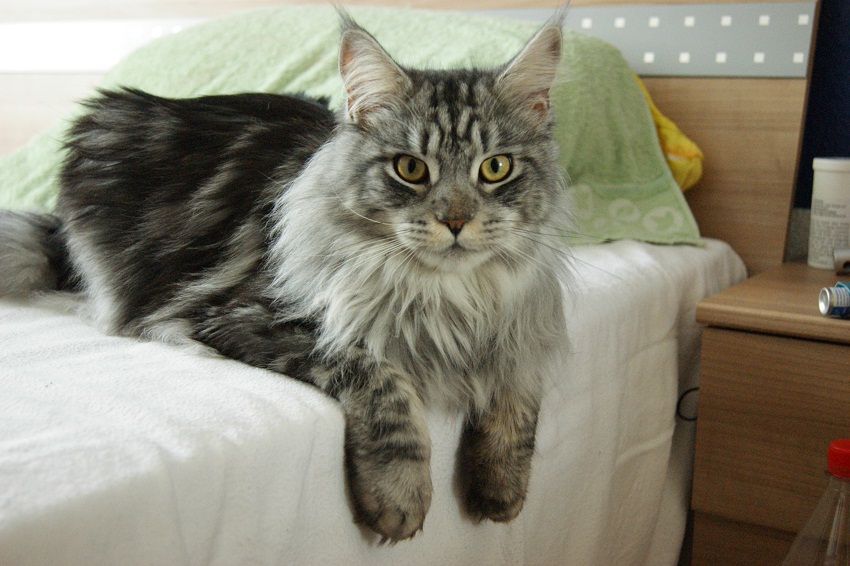The Nebelung (pronounced as Nay-bel-ung) is a rarely found domestic cat, attaining its name from the German word Nebel, meaning ‘mist’ or ‘fog’ which perfectly describes its silky blue semi-long coat blended with a silvery hue at the tips. This feline breed has a long body stature along with green or yellowish-green eyes, pointed ears, triangular-shaped pointed head and a soft, fine, silky coat.
Quick Information
Physical Appearance & Size
| Weight: | 3.5 to 7.5kgs |
| Height: | 8 to 10 inches |
Colors & Patterns
| Coat: | Long, Soft, Fine, Dense, Silky |
| Color: | Combination of blue and silver-gray |
Other Characteristics
| Group (of Breed): | Domestic |
| Life Expectancy: | 10 to 16 years |
| Personality Traits: | Playful, Soft-spoken, Intelligent, Gentle |
| Shedding: | Moderately high |
| Good with Children: | Good with older children of the family |
| Hypoallergenic: | No |
| Calling: | Soft |
| Originated in: | United States |
History
The credit of developing the Nebelung breed goes to Cora Cobb, a computer programmer from Colorado. Cobb had adopted a domestic, black, short-haired cat named Elsa in the early 80s that she gifted to her son Karl. Elsa on mating with a black long haired male cat produced a litter of five among which there was a male kitten have long blue hair. Cobb named this unique-looking kitten Siegfried who was born in 1984. The very next year (1985) Elsa produced a second litter which again had a blue-haired kitten but this time of the feminine gender, named Brunhilde.
Both of them laid the foundation stone of this breed, being the first registered Nebelungs. Attracted by the fascinating features of these kittens who had striking resemblance with the Russian blue though with a semi-long haired coat, Cobb decided to conduct a brother to sister breeding. She sought advice from geneticist Dr. Solveig Pfleuger of the American Cat Association in this regard with Siegfried and Brunhilde producing their first set of litter in May 1986.
Initially, Cobb had defined the breeding standard as per the Russian Blue with a variation in the coat length. However, after receiving objections from The International Cat Association Russian Blue Breeders the breed description of the Nebelung was revised. It was described as a breed having a resemblance with the blue cats that had been imported from Russia in the 19th and 20th centuries.
The Nebelung was first recognized and given the ‘New Breed’ status by the TICA in 1987. It has also gained recognition from the World Cat Federation (WCF), the American Cat Fanciers Association (ACFA) along with other independent cat associations in Germany, Netherlands and Belgium.
Temperament and Personality
Having a soothing and pleasant temperament, the Nebelung is playful, gentle, intelligent, and energetic. This cat with a loving and affectionate disposition is highly devoted and loyal to the members of its family. In fact, some of them may have their choice of favorites among all the members, forming a strong bond with that particular person, following him throughout the house.
They love to be pampered, enjoying a cozy cuddle on your lap or riding on your shoulder and exploring the house. Their desire for living in a peaceful environment makes them a good choice for elderly people. They also mingle well with the older children in the family who can treat them with care and respect, though not well-suited for the younger ones as they dislike being handled clumsily. Being very particular about their food, they always want their meals to be given to them on time.
This humble breed is shy towards strangers, trying to maintain a distance from them. Though very active, they thrive well indoors, loving to move about the house in a delicate and gentle way. However, they take time to adapt to any change in their living conditions. These sensitive cats detest to be ignored or made fun at and will keep you entertained with their brilliant sense of humor.
Care
Brush the Nebelung’s coat at least two times in a week with a wire-pronged or steel brush. However, during the shedding season occurring in spring and fall make it a point to brush its coat at least thrice. Brushing its teeth on a weekly basis helps in preventing periodontal disease. You should also trim your pet’s nails and keep their eyes and ears clean by wiping gently with a soft, moist cloth.
These playful cats need sufficient space to move about the house freely. Making them exercise and play on a regular basis minimizes the chances of becoming obese. Moreover, providing these intelligent cats with a lot of interactive toys keeps them entertained and busy when indoors.
Health Problems
This breed is healthy and hardy, not known to suffer from any genetic diseases. However, it may be prone to certain common ailments which most cat breeds tend to develop like diabetes, hyperthyroidism, renal failure, tapeworm, fleas, and diarrhea. Make sure that your pet is given vaccinations for flu and enteritis. Contact your vet to know of all other vaccines required for this breed.
Training
Imparting socialization training to the Nebelung kittens will help them to overcome their shyness towards strangers and get along well with the children of the family.
Feeding
Give your pet Nebelung healthy brand of cat food that has been standardized by the American Association of Feed Control Officials. These cats tend to be very finicky and choosy about their food, thus make it a point to prepare a diet for them that is healthy as well as delicious. Try controlling the carbohydrate content in their food as it may make them prone to obesity also increasing their risk of developing diabetes.
Differences: Nebelung vs. Russian Blue
| Nebelung | Russian Blue Cat | |
| Coat | Dense, Semi long, Silky, Heavy undercoat | Dense, Soft Undercoat |
| Body Type | Long | Muscular |
| Eye color | Green | Green |
| Country of origin | U.S.A | Russia |
Interesting Facts:
- The Nebelung had been featured on Cats 101, a show aired on Animal Planet.
- In the animated film of 1988, Pound Puppies and the Legend of Big Paw the character named ‘Hairball’ was a Nebelung.

